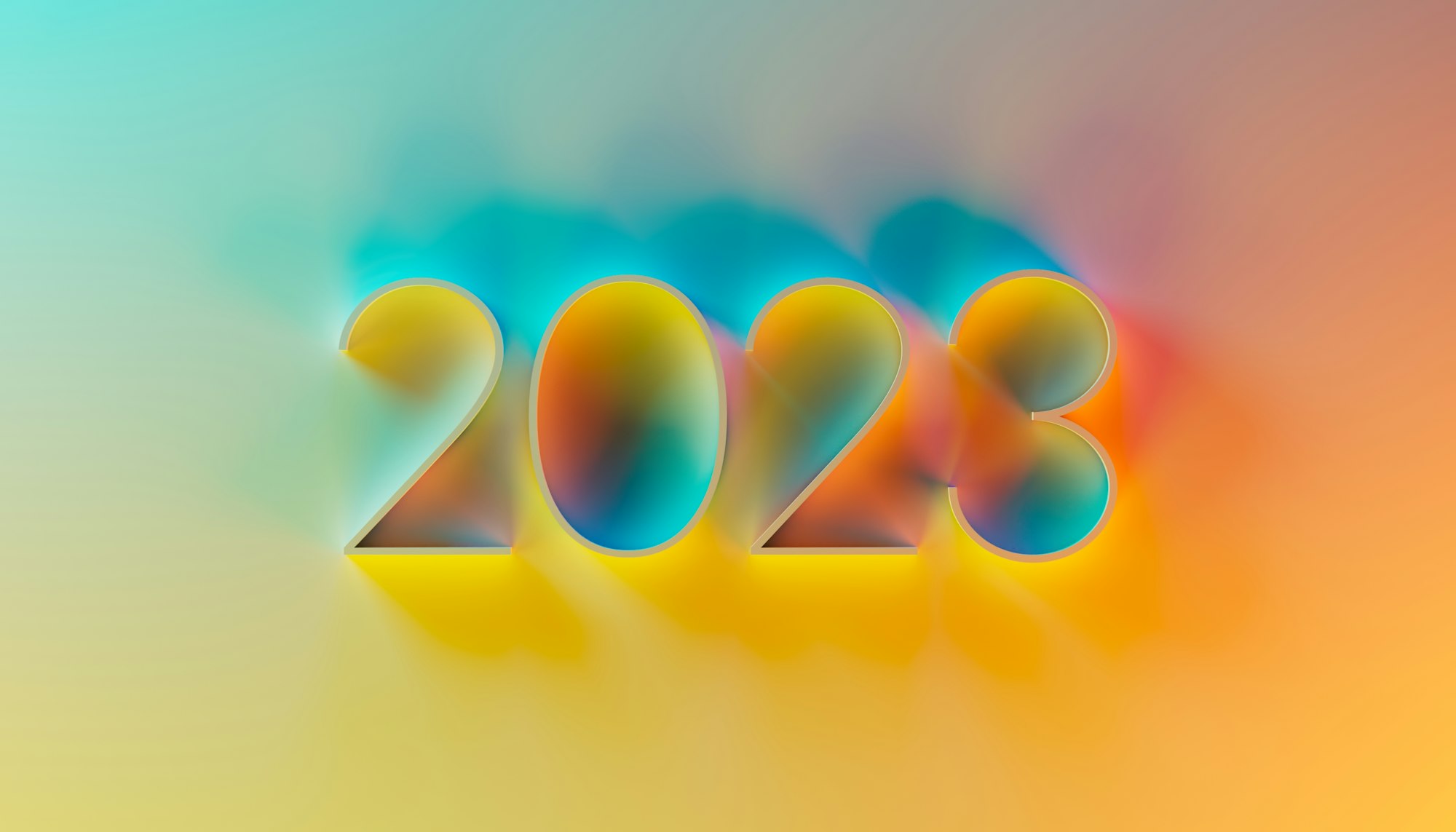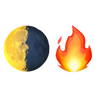Predicting the Unpredictable: Looking Forward to 2023
It's our final newsletter of the year, which is both crazy and exciting. It's hard to deny that 2022 was both a challenging, and awesome year, with our Pulse AGM being a real highlight.

It's our final newsletter of the year, which is both crazy and exciting. It's hard to deny that 2022 was both a challenging, and awesome year, with our Pulse AGM being a real highlight.
However, we're not ones for looking back, so we look forward to an even more awesome 2023. Before that though, from myself and the entire Moonfire team, we hope that you have an amazing Holiday season and we look forward to welcoming you back in the new year.
Mattias and the Moonfire team
🌓🔥
What's Up At Moonfire?
Four predictions for 2023 and beyond
Last year, we gave five predictions for the next five years. But we’re always thinking about what’s up ahead, and after quite a seismic 12 months we thought we’d make some new ones for 2023 and beyond.

1. Generative AI changes the way we create
2022 was the year of generative AI: OpenAI’s DALL-E 2 and ChatGPT, Stability AI’s Stable Diffusion, Meta’s Make-A-Video, and Google’s DreamFusion. These tools are ushering in a new age of human-machine co-creation.
The models are already good enough for quickly spinning up prototypes and V1s. Next year, and beyond, will see better models, more data and more compute – drafts will get better and better, until, perhaps, they’re good enough to use as the final product. Generative AI will also verticalise and become more ubiquitous as businesses start building on top of these models for their own niches. It will build on its current strengths in code, text and images and start making serious inroads into 3D models, video and gaming.
Far from killing off human creatives, it will make their jobs easier and put the best of them in higher demand. These models shorten the idea generation and V1 phase, but rely on humans to finesse the output – so the edge becomes not production but human ingenuity. In the same way that mass production of physical goods has made handcrafted items a luxury, businesses and consumers will pay a premium for this human edge.
Looking further ahead, we’ll also start to see multimodal generative AI – AI that learns from, and can output, different media. In other words, rather than your text prompt generating just one form of content, it will generate a mixture of formats – text, images, videos, 3D models, and synthesised speech. It could create entire content campaigns or video games from a single prompt.
And this has an impact beyond content creation. Think about it in the healthcare space. Say you have a bunch of medical data in different formats – prescription history, X-ray images, blood sample results and some recordings of video consultations. A multimodal AI model could take all these various formats of health data and create personalised educational videos, and suggestions for further diagnostic tests and generate tailored treatment plans. It connects all your siloed health data, finds the patterns and offers a more bespoke healthcare experience.
2. API-first companies break down walled gardens
The data tech stack will continue to evolve, as more tools arise to better connect up and orchestrate data throughout the business – from data quality and governance tools to data warehouses to tools, like our portfolio company Lightdash, that enable faster, more accessible business intelligence.
The next stage in evolution will be the rise of the API-first approach: building the connective tissue between existing applications, rather than developing and pushing a particular product or ecosystem. For API-first companies, openness isthe product. This will allow organisations to build flexible and scalable systems that can be easily integrated with other systems and applications.
It’s already established in the fintech space, where open banking and interoperability have accelerated greater connectivity between different ecosystems and the sharing of customer data, but this model will start to have a big impact in other verticals, too.
Another of our portfolio companies, Humaans, for instance, is taking an API-first approach to people and talent. Rather than imposing a structure or proprietary set of tools on a company, Humaans joins up the HR point solutions that a company is already using or wants to use. It acts as the central node through which every HR component – payroll, pension, employee engagement, onboarding, training – can be managed. This allows businesses to switch individual solutions in and out as their needs change, without having to re-architect their core data layer.
This approach enables a future where developers can start to build on top of this API-first infrastructure, and distribute new point solutions across a ready-made open and interoperable ecosystem.
3. The creator economy seeks validation
In our predictions last year, we said that everyone will become a creator, with individuals monetising their uniqueness and connecting directly with their audience. This will only pick up pace in 2023 with the explosion of Gen Z nano-creators, and improvements in generative AI further democratising access to creative tools. But this also makes the need for veracity – something the digital world has yet to get a grip on – more urgent.
This theme is playing out in two different ways.
We’re seeing a new generation of social media that emphasises smaller communities and authenticity. Take the US-based social media app Gas. The app – released in August, and overtaking TikTok as the most downloaded app on the Apple App Store by October – is designed for teenagers and focuses on cultivating positivity in a smaller social network. There’s no ability to directly message other users; instead, users anonymously answer multiple-choice questions – all positive – about people at their school and earn coins in return. It is essentially gamifying a more authentic, positive community.
By releasing Substack Chat in November, Substack, too, is moving in the same direction, allowing writers to create their own private social network where they can make the rules, and set the topic and tone of every discussion.
We’re also seeing attempts to make the online world more transparent through better verification. In the creator economy, skills – not identity – are the true currency, yet the majority of claims online are still unverified, even on major platforms. One of our portfolio companies, The Lounge, is on a mission to solve this. Starting with a verified community of high performers from top-tier tech companies, their long-term vision is a credentialing platform and authenticated digital identity, with verified attributes on a tokenised blockchain. This will underpin a verified social graph platform that can be plugged into other applications via API, and used for everything from hiring to building professional communities.
4. Gaming gets good
Gaming may have dropped from its pandemic highs, when the industry had a literal captive audience, but 2023 will see it explore new worlds.
One of our portfolio companies, Quest Portal, ties generative AI, the creator economy and gaming together. They’re on a mission to create more immersive virtual tabletop gaming experiences, making role-playing games – typically played in person, around a table – accessible for all and creating new economic opportunities for creators in the tabletop role-playing space. And with generative AI, game masters and players can unleash their creativity at minimal cost, allowing them to focus more on their stories.
More and more social and professional experiences will start to feel like games, and be shaped by elements of game design.
Video games will be used increasingly in the healthcare sector. Thymia, for instance, is using games and AI to help diagnose, monitor and treat depression and related disorders. AI and VR will also be used to create realistic simulations of medical procedures and environments, allowing doctors and nurses to train in a virtual setting. And these simulations can be used to educate patients about their health conditions and treatment options, making the learning process more engaging and interactive – and the treatment more effective.
In education, VR and generative AI-powered gaming will be used to create virtual classrooms and interactive learning experiences that allow students to explore and experiment in a safe and controlled environment. Why not learn about space by virtually travelling there? Engage in hands-on simulations and take trips to museums on the other side of the world via a headset.
In design, generative AI will be combined with VR to create immersive and interactive experiences that allow designers to visualise and test their ideas in a virtual setting. For example, architects will play around with virtual models of their buildings and walk through them in real-time, giving them and their clients a real feel for the assets and spaces they're designing.
These sorts of applications will only increase as generative AI models and VR become more sophisticated in the years to come. All the world’s a game.
We can’t wait to see what 2023 has in store. We’d like to thank you, our founders and LPs for all of your support, and wish you a very happy holiday. Here’s to a happy, exciting and productive new year!
— Akshat 🌓🔥
Moonfire Academy
Henry Erskine Crum
Building a product that customers love
At the end of November, we were delighted to welcome entrepreneur and tech executive, Henry Erskine Crum, to speak at one of our Moonfire Academy sessions for founders.
With 20 years in product management, people management and leadership, as well as the last 7 years building the future with Meta, Henry's advice to founders this month was pretty straightforward:
Build something that people will love.
There are some simple steps that help with this too:
- Have a vision! Don't just wing it, you need to be able to explain to a complete layman what you want to create.
- Stick to what you know! Would you like a software engineer to cook you a gourmet meal? No, you want a chef. The same goes for your product. You don't need to be the best in the world at what it is you're trying to solve or build, but you do need to know all about it.
- Know your goals! What is your north star metric? Discern this and you'll be able to build a roadmap and strategy.
For getting started, these are some of the most important kicking-off points. Once you've sorted these, you can move on to identifying competitors, promoting, prototyping, and all those other fun steps that come with building a product.
Podcast of the Month
The a16z Podcast: "Ben Horowitz and Brian Armstrong on Building and Overcoming the Hard Things"
We're big fans of the a16z podcast, which brings you all things tech, culture, news, and the future – especially as ‘software eats the world’.
In this episode, listeners hear from Brian Armstrong – co-founder and CEO of Coinbase – about what’s top of mind for the crypto industry. This includes the impact of FTX's collapse on future regulation, how this crypto winter might be different from previous ones, founder psychology during downturns, the transparency that comes with being public, and much more.
Brian is interviewed by a16z cofounder and general partner Ben Horowitz, who has the unique perspective of having invested in, built, and been on the board of numerous companies during the ups and downs, leading him to his well-known book The Hard Thing About Hard.
We hope you enjoy it as much as we did.
Good Read of the Month
"Picturing Quantum Processes: A First Course in Quantum Theory and Diagrammatic Reasoning" by Bob Coecke & Aleks Kissinger

The unique features of the quantum world are explained in this book through the language of diagrams, setting out an innovative visual method for presenting complex theories.
Requiring only basic mathematical literacy, this book employs a unique formalism that builds an intuitive understanding of quantum features while eliminating the need for complex calculations. This entirely diagrammatic presentation of quantum theory represents the culmination of ten years of research, uniting classical techniques in linear algebra and Hilbert spaces with cutting-edge developments in quantum computation and foundations.
Written in an entertaining and user-friendly style and including more than one hundred exercises, this book is an ideal first course in quantum theory, foundations, and computation for students from undergraduate to PhD level, as well as an opportunity for researchers from a broad range of fields, from physics to biology, linguistics, and cognitive science, to discover a new set of tools for studying processes and interaction.
Perfect for anyone looking to uplevel their knowledge over the Holiday break.
Thank you for tuning in in 2022. We can't wait to bring you all the awesome things in our pipeline next year.
Not yet subscribed? You can sign up on our blog page. If you know someone who’d love to read this newsletter, please feel free to share it. We hope you had a wonderful December, and have a great Holiday break!
All the best,
Mattias and the Moonfire team
🌓🔥

